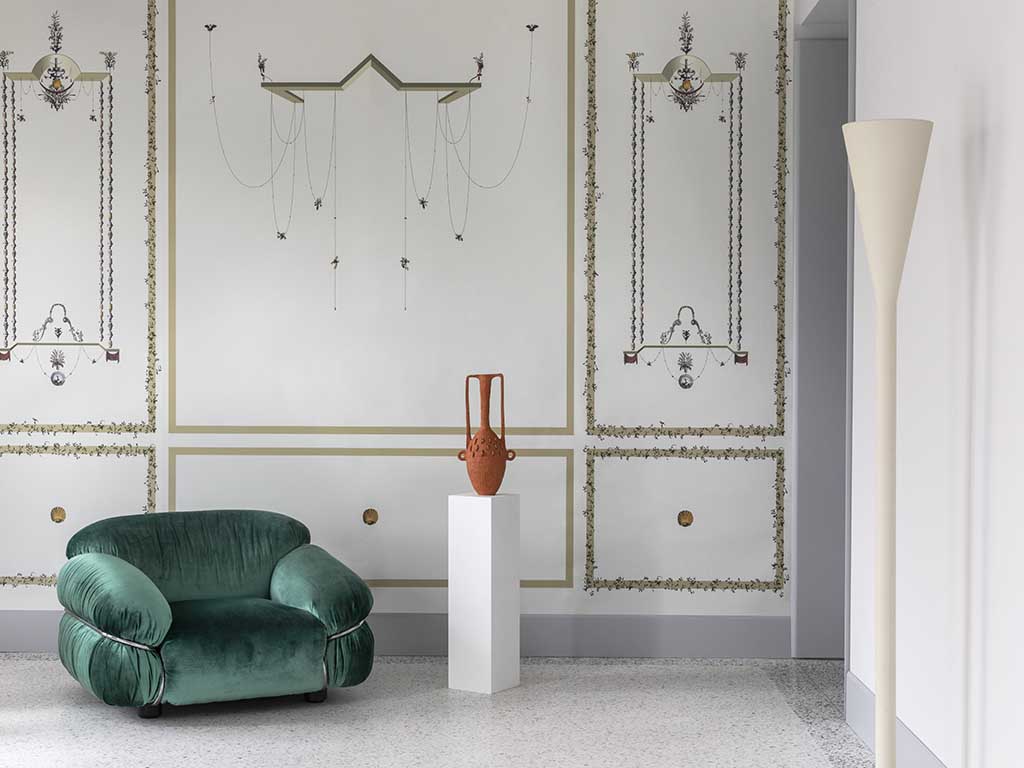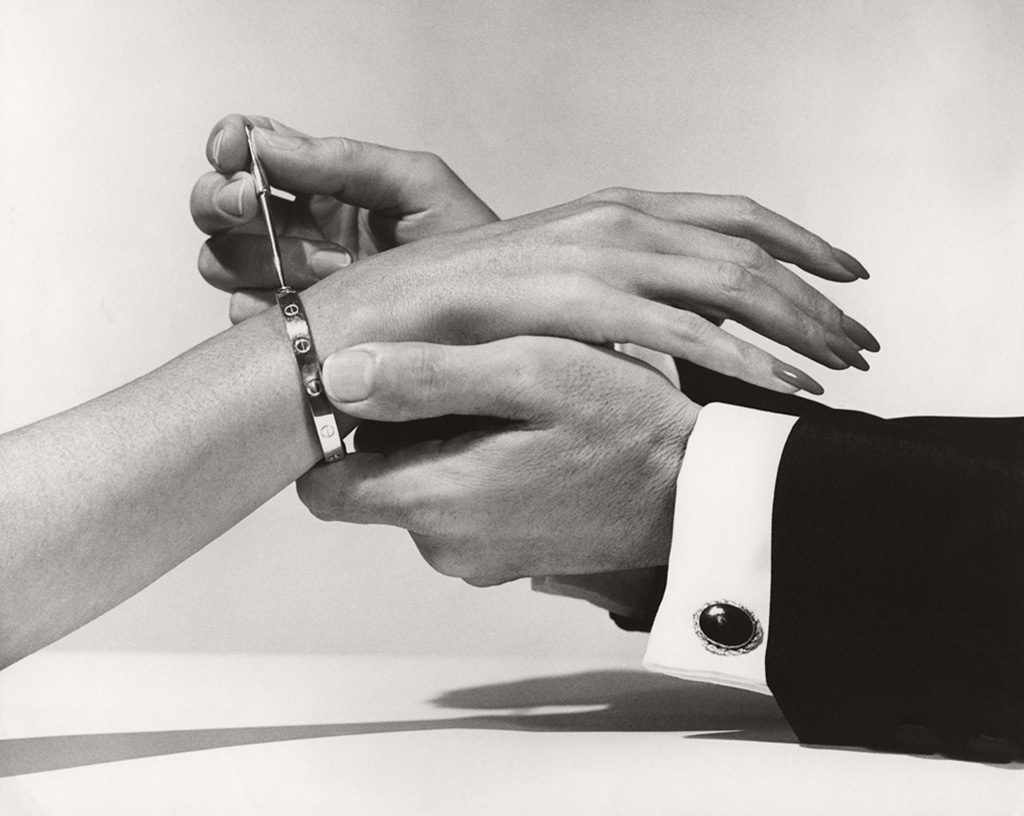On the occasion of Milan Design Week 2023, Misha presents Nuova Pompei | The House of Mysteries: a scenographic installation introducing the wallpaper collection of the same name New Pompeii designed by Vito Nesta.
The company is presenting itself at the Fuorisalone for the first time with an immersive, kaleidoscopic installation, which can be visited from 14 to 23 April 2023 at Via Canova 7, transporting the visitor on a journey of discovery through one of the wonders of our country. After having dedicated herself to oriental aesthetics, to the decorations of the Chinoiseries and after having travelled the Silk Road, with her new collection Misha metaphorically returns home, to Italy, to the city of Pompeii. The passion for the exotic, which has always accompanied Misha’s creations, shifts the gaze out of the ordinary. The tendency to consider unusual that which is far from our culture is turned upside down by the brand, which imagines, with the new collection, that the exotic is really our home but seen through the eyes of the foreigner. Pompeii comes back to life with its iconic and exciting frescoes and pictorial decorations.
The exhibition design, also the result of Vito Nesta’s creativity, alternates elements reminiscent of ancient splendour – such as lavish banquets, plaster busts and Roman-inspired objects – with urban objects, such as innocent pipes, tarpaulins and construction site lights . In fact, the title ‘The House of Mysteries’ refers precisely to the ruins of the ancient Roman dwelling found in the excavations of Pompeii. The mise en scene imagines a journey through the ages that, like a time machine, allows the spectator to relive the thousand lives of Pompeii. The route is conceived as a visual tale, a succession of narratives that reveal, room after room, the four wallcoverings: Grotesque, Paradise, Mosaic and Samnite architecture.
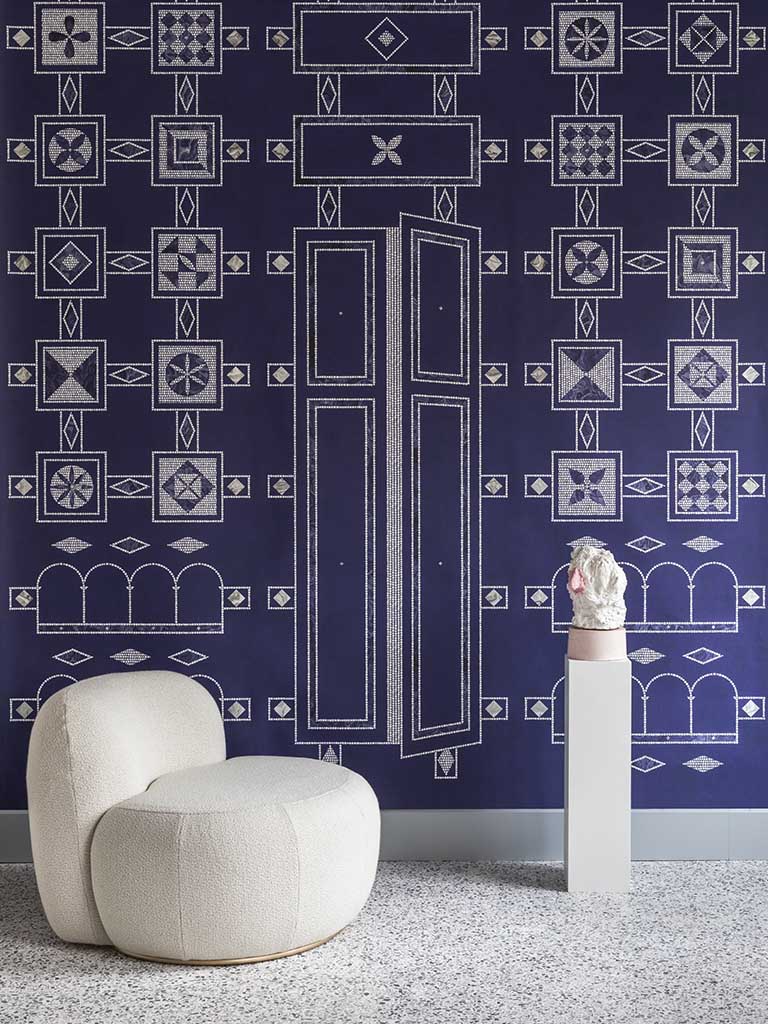
The wallpaper Architetture Grottesche , anticipating the entire collection, covers the entrance corridor and recalls the motifs of the boiserie while concealing, among its designs, more distant roots. Innocent tubes, which outline the walls of the location, become the ideal support for the exhibition and, playing with volumes, build an architecture within architecture. Continuing along the route, a number of typical rooms of Pompeian houses are staged, as in a great play, which recount the customs and moments of daily life at the time. Architetture Grottesche (Grotesque Architecture ), in the first room, is the backdrop to a set table that holds cups, busts and ancient vases as if to simulate an opulent banquet, reconstructing the space of conviviality and sociability . The second room introduces the Paradise wallpaper : plants, fruits and birds in flight cover the walls here, in connection with lush greenery. A narrow-leaved tree, a seat and a dormeuse with contemporary aesthetics and organic, sinuous shapes invite the moment ofotium. The last two rooms, on the other hand, allow one to discover and touch the company’s know-how. Misha’s ability to clad any environment and its aptitude for creating customised spaces and products is manifested in the bathroom, completely covered in Mosaic, an extraordinarily versatile and refined pattern. At the end of the layout, we find an actual workshop that emphasises the strong craftsmanship component of Misha’s productions. Within a neutral space, embroiderers and painters, for the duration of the exhibition, decorate and embellish the Sannita wallpaper, part of the collection, transforming it into a hand-painted and handcrafted work of art.
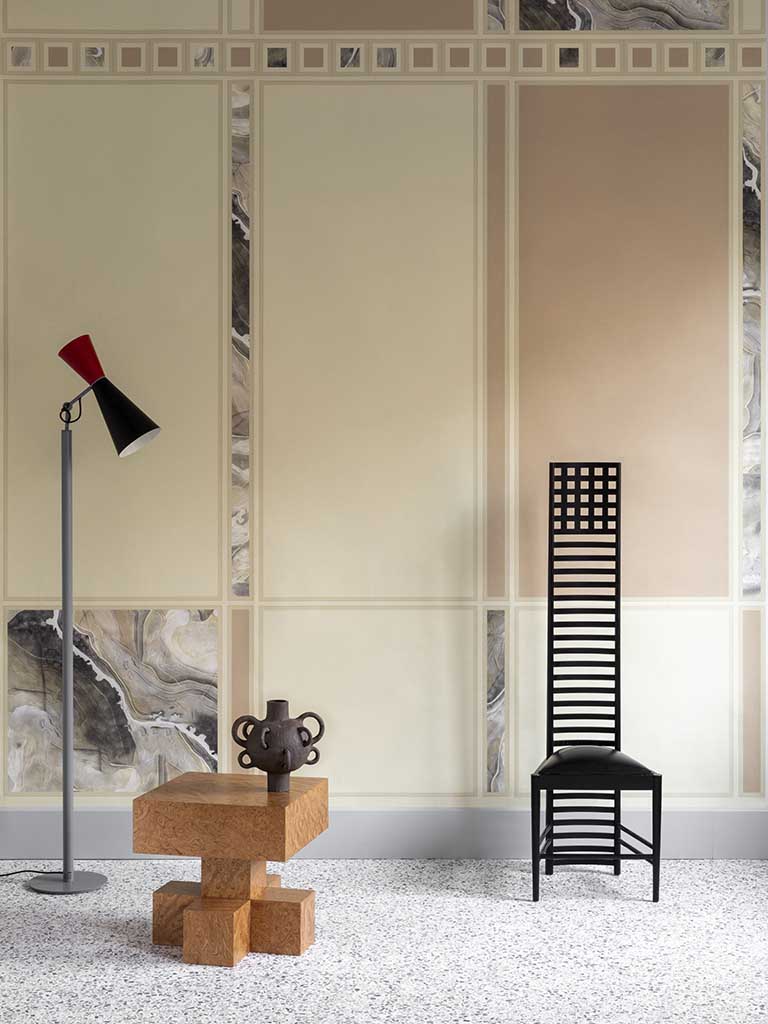
The New Pompeii Collection
The Nuova Pompei wallpaper collection offers a modern and dynamic reinterpretation that weaves the history of the city’s places with an eye to the future. There are four different patterns all united by a skilful use of colours, contemporary and welcoming: Architetture Grottesche, Paradiso, Mosaico and Sannita. Architetture Grottesche, which anticipates the collection, finds its origin in grotesques, a Roman painting style from the Augustan era that was in turn inspired by the Pompeian style. The ancient decorations are rethought by Vito Nesta who, maintaining the harmony and spatial arrangement of those forms, imagines and draws on paper a dreamy setting. The design is composed of light, metaphysical architecture against a monochrome background made precious and shimmering by a weave of jewels, coloured gems and minute details. Paradise, evokes a dreamy, dreamy atmosphere and the desire, in ancient times, to be surrounded by luxuriant nature in the intimate rooms of the home dedicated to resting at night. Vito Nesta, inspired by the frescoes of the Orchard House, where ‘garden painting’ accompanied the architecture of the bedrooms, conceived an ornamental design in which nature branches out between the walls. The wallpaper depicts birds in flight in the foreground and fruit plants such as citrus and pomegranate trees among which one glimpses ruins of distant epochs, in a continuous dialogue between interior and exterior.
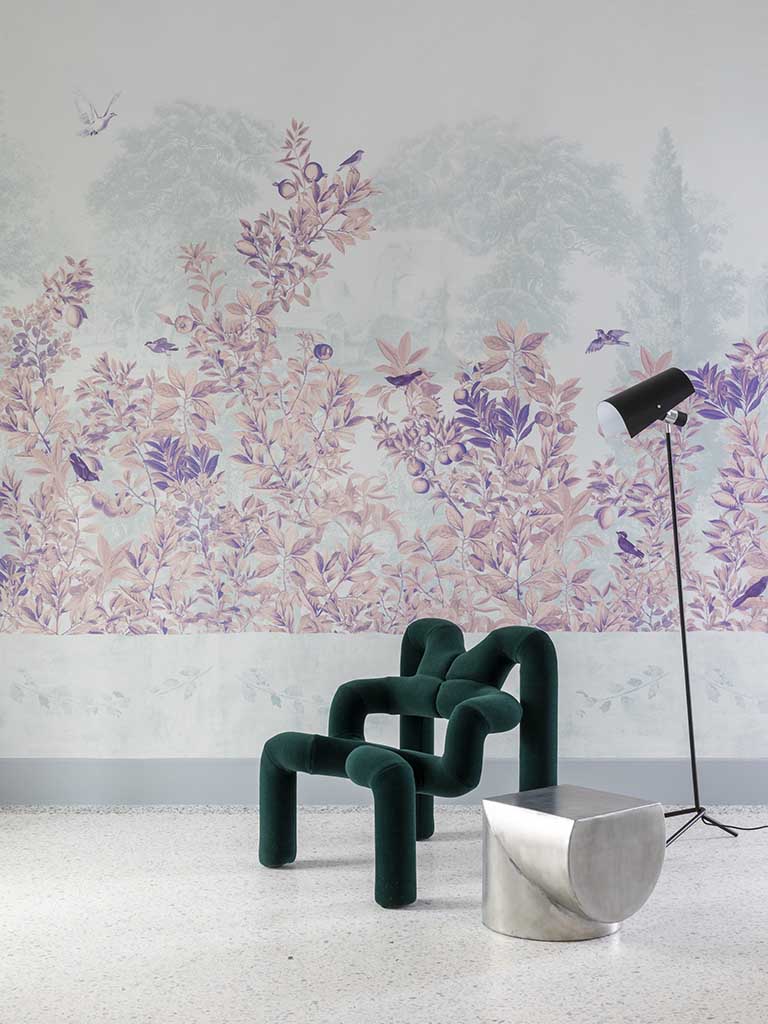
Evocative is the wallpaper Mosaica contemporary reinterpretation of the floors of Ancient Pompeii: real mosaic paintings executed according to the Greek “mat” technique. Those decorations, once intended for floors, are now designed and applied to the walls and ceiling, changing the observer’s point of view. The Mosaic wallpaper, with its innovative and contemporary design, is modular according to space and personal preference thanks to Misha’s craftsmanship. The geometric and modular pattern, with its subtle and elegant lines, thus becomes a highly recognisable and innovative product. Textural and concrete is the Sannita wallpaper , which pays homage to the pictorial techniques of the early Pompeian style found in private homes but also in public buildings. Vito Nesta moulds the decorative history of Pompeii in a new way by translating the materiality of stone onto a new support: paper. The wallpaper mixes the regular geometries of rectangles and squares with the veins of marble and onyx through the use of interchangeable modules . The wallpaper alternates solids and voids, and the colours that emphasise the material areas, combined with the gold, silver and copper veining, make the product unique and precious. mishawallcoverings.com


